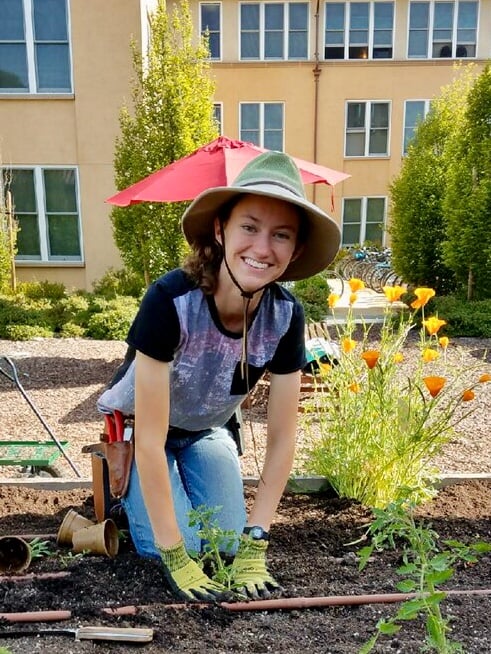With fall quarter underway, the Bay Area-based Farmscape is approaching the one-year anniversary of the start of its work cultivating 10 Teaching Gardens at dining halls around campus.
Farmscape is a company that converts corporate and residential gardens into edible ones in order to promote urban farming. Last fall, they started collaborating with Residential & Dining Enterprises (R&DE) to support sustainable food by maintaining dining hall gardens and supplying produce to dining hall kitchens.
Before the Teaching Gardens were created, Stanford already had small gardens near each dining hall; however, these lacked professional care and guidance. R&DE eventually reached out to Farmscape for help.
“You don’t decide to merge with Stanford; Stanford decides to merge with you,” said Farmscape Principal Lara Hermanson. “They had seen our work at other places around town and decided we would be a good fit for the project.”
The first phase of the partnership was a test run of two gardens. That trial period was deemed a success, which — combined with Farmscape’s prior portfolio — convinced Stanford to extend the company’s oversight to a total of 10 gardens, including the Arrillaga Family Dining Commons greenhouse and the hydroponic towers in Florence Moore Dining.
Head farmer Chloe Lemons maintains all 10 of the Teaching Gardens and also lives on campus so as to have easier access to her work. Hermanson, meanwhile, usually visits Stanford every Friday, although she comes even more often during the fall planting season.
“All of our staff, when we have extra days, really like working there,” said Hermanson. “We rotate in and out.”
With the first anniversary approaching, Farmscape has continued to cultivate the gardens, while R&DE facilitates student internships, volunteer days and workshops in them through its Sustainable Food Program.
“We currently have a handful of fairly regular students who come out and help us… with tasks like harvesting and deep-watering,” Hermanson said.
Because Stanford chefs are used to buying food in bulk and planning ahead for meals, the Teaching Gardens focus on supplying foods that are hard to obtain. Fresh purple basil, edible flowers and expensive microgreens bloom in the gardens, allowing chefs to add variety without worrying about cost or availability.
“We created [the gardens] with a lot of input from the kitchen staff on what they would actually use,” Hermanson said.
Currently, the gardens grow heirloom tomatoes, zucchini, winter squash, peppers, herbs and multiple varieties of eggplant. Various fruit trees across the farms are also expected to produce apples, persimmons and lemons this fall.
Produce from the Teaching Gardens are also used in workshops and classes. Last spring, Farmscape and R&DE taught an aromatherapy and stress-reduction workshop at the Roble Teaching Garden. By utilizing a handful of different plants in the gardens, they created scented sachets for students to take home during finals.
“These gardens add more than just financial value,” said Hermanson. “They provide a really great place for everyone to hang out. They showcase Stanford’s commitment to growing fresh, organic food. I don’t think Stanford would be investing this much money in food and dining if they didn’t think mindful eating was the way of the future.”
Contact Sophie Kroesche at so3.james14 ‘at’ gmail.com.
